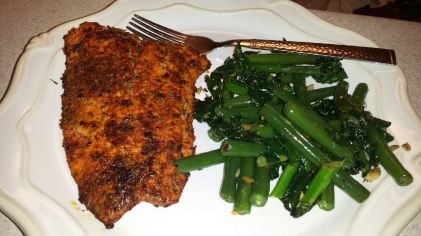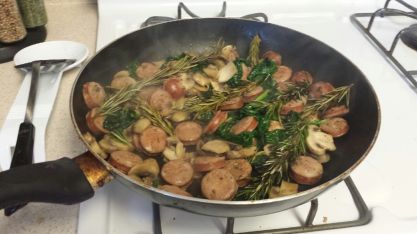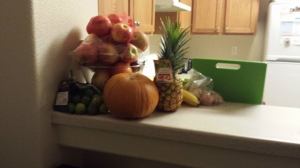Getting started on this journey to health (and weight loss)…
For some of us this journey is truly that, a journey, over months and years, with lots of changes, adjustments and growth. That being said, it is not easy. It’s not easy in the beginning, the middle or the end. It also doesn’t have to be super difficult either, the choices are all ours.
- Find Your Motivation:
I mean, what, deep down is the real reason you want to get real about losing weight and getting healthy? Is it a health issue that’s popped up in your life making you realize that taking better care of your body could help alleviate symptoms or help your body heal (this was a big one for me)? Was it a way you felt that you never want to feel again? Like when you heard remarks from others about your size, or even just when you made remarks/thoughts about your own size? Is it because you find you can’t do certain things that others can, like go on certain rides or other outdoor activities with size/weight limits, or just from lack of energy on its own?
Only you know the real reason/s why you want to make some changes. And it really helps to remember these reasons when times get tough and you are tempted to make a ‘poor’ food choice. Also, adjust your motivations as necessary: maybe in a few days, weeks or months the motivation you once had isn’t enough for you to continue on but maybe you can figure out a new motivation. I’ve had a rough year myself (not surprising, def. lots going on). I’m now trying to focus on being a positive role model for others, because how can I be the health coach I want to be some day if I’m not reaching for my full potential? Maybe you feel the same way about being role models for your friends, family, or children? Whatever the motivations are, hold on to them, and when they change go ahead and change what you’re holding on to.
- Don’t Exercise and Don’t Stop Eating Pizza (or do anything else you do don’t want to do):
Considering this is a life long journey, a lifestyle change, and that it may take years to get to your goal weight (depending on where you are starting from), it is important to remember that this needs to be something that will work for you. If exercising is just not something you even want to do, or something that you just honestly don’t have enough energy for….. then don’t do it. I would never tell anyone who wants to exercise not to. It’s very good for you in so many ways. And some people get their motivation for eating right from working out (they feel like they want to eat healthily or they essentially worked out for no reason). However, if feeling like you need to work out in order to lose weight, is holding you back from trying than drop that feeling!
First of all, it’s not true at all. I lost at least 40 pounds (nearly half of the weight I had to lose in the first place) before even really considering working out. I’ve heard different statistics different places, but the rule of thumb is generally that 80% of our efforts for weight loss need to be food/nutrition related. It makes sense. Say you go a day without working out (let’s say a moderately paced hour long workout) and you miss out on having burned 300 calories. Ok. Now, let’s make a similar, but nutritionally related, ‘mistake’ instead and have fast food at one of our meals, and now we’ve added 1500 extra calories for the day. It’s easy to see which choices are going to hurt us more.
The point, really, is that if there is something holding you back then let it go, like thinking you will have to work out, or thinking that you can never have pizza or ice cream again, or thinking that you will have to eat vegetables. Eventually, it would be good to add in some workouts, and limit the pizza or ice cream (and/or try new healthier alternatives, like making your own, or buying goat or almond milk ice cream), and yes eventually on the path to health you will likely be eating more vegetables. But these changes don’t have to happen yet, not if you’re not ready for them.
Some people like to just jump all in, and I say that’s fine too. If it works for you. And if it stops working for you, don’t give up just change things up. In the beginning of my journey I never thought about how I would be exercising one day, and I really never dreamed I’d eat any vegetables ever (and now I eat tons, and actually enjoy them too!). Start making changes, and as you learn more about what is healthy and what’s not, keep making changes. And as you start to notice certain things working and certain things not, again keep making changes.
- Always Remember That This is a Choice:
It helps to remember you have a choice, because you do. When someone brings your favorite cookie into work, you have a few choices. Eat none, and continue on your journey. Eat one (or maybe even two), and continue on your journey. Or eat a whole plateful, get quite sick, gain ¼ of a pound the next day, and then continue on your journey. During my journey, I have picked all three at different times. You think we would just wise up and never pick that third option, but what can I say?
Now, when I really get into trouble is when I choose option #3, and then keep on choosing that option (I’ll restart Monday, I screwed today up so I’m just going to make it a day or weekend long ‘cheat’). I may never be able to completely move on from my food addictions/issues. I don’t know. But I do know that I always have the choice to continue on my journey no matter how far off track I may wander. And that’s ok. Sure, it would be nice to be at my goal weight already. But as long as I get there, I’m ok and I will be ok. And so will you :).
- Continue to do What Works:
I have tried it all, I started with calorie counting, tracking, menu planning, journaling and weighing in each week. Then I threw the scale away (literally walked it down the street and placed it in garbage can at the nearby park, I thought it would feel more liberating than it did but hey), and stopped tracking and menu planning. Then I bought a new scale and started menu planning again. Then I went Vegan. Then I started Juicing daily, then I stopped, then I started again. Ok this all may not be in the right order. But the point is this whole thing is such a continual and ever-changing process. Just continue to go with it, and do what works for you!
- Set Yourself up for Success:
Plan ahead (cooking a lot of brown rice and black beans for the week, for example). Know when you are running out of healthy foods. Have back up snacks in your purse, at work and at home for when hunger strikes. If you want a treat, plan it in (many times this helps with not feeling guilty, and then we really will just have the treat and move on). Don’t keep your worst desired sweets or other junk food in the house (buy an individual size if you want a treat, or if family wants it), because one bad moment and you’ll be eating it.
- Keep it Simple:
Meals don’t have to be extraordinary. In fact during the times I have had the most weight loss, I ate very similar and basic meals each day (brown rice, veggies and goat cheese is my usual dinner these days, or eggs, tomatoes and goat cheese — I think it’s delicious yet it’s so healthy and low calorie). Trying to plan full meals each night (spaghetti, tacos, etc.) usually ends up turning out to be meals with much higher calorie counts than you thought even if you are using healthy ingredients. So don’t be afraid to just keep it simple (most of the time, but allow for other meals once or twice a week too). But again, whatever works for you!
Always remember, we all have different constraints. Do the best you can with what you have and what you know. If you do that, you will continue to grow.






